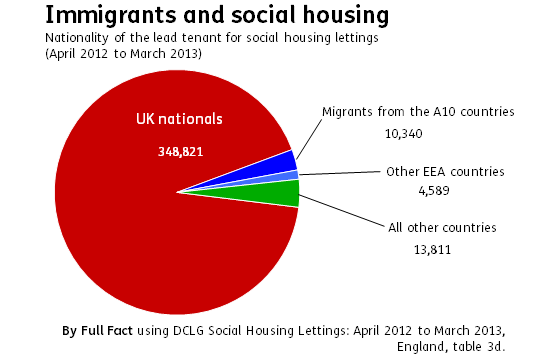Following up our answers on the Jeremy Vine show
What do we mean when we say that migration is at 260,000?
The 260,000 figure refers to net migration into the UK in 2014. This is the difference between all residents leaving the UK (323,000) and all people arriving to take up residency (583,000) in the year ending in June 2014.
Where are EU migrants most commonly coming from?
Around 33,000 immigrants arrived from Spain in the year ending June 2014. The second largest group from an EU country (27,000 people) arrived from Poland.
228,000 people arrived from the EU. 117,000 of these came from the EU15 (the EU member countries before 2004), 74,000 from the EU8 (the central/Eastern European countries that joined the EU in 2004) and 32,000 from Bulgaria and Romania.
What about India?
33,000 immigrants arrived from India in the year ending June 2014.
Have non-EU migrants been a drain on public funds?
We've previously discussed a report on this subject. The report by the Centre for Research and Analysis of Migration found that non-EU migrants who arrived from 2000-2011 contributed £5 billion more in taxes than they took out.
Immigrants from outside of the EU living in the UK between 1995 and 2011 took out £118 billion more than they put in.
This figure is harder to interpret because it only reports an immigrant's contribution during that period. This means that a person who arrived as a young worker in 1965, paid taxes until 1995 and then became economically inactive would be represented as a cost.
How many migrants claim tax credits?
HMRC figures obtained through an FOI request show that of the 4.6 million families claiming tax credits in March 2014, 739,000 contained an adult who was not a UK national at the time of national insurance number registration. Of these, 318,000 were from the EU.
How many migrants claim child benefit?
The same data shows that in August 2012, 990,000 of the 7.9 million families receiving child benefit contained a non-UK national.
How many immigrants lived in social housing?
Social housing includes supported housing (designed for people with special requirements), general council housing and homes covered by the affordable homes programme.
The Department for Communities and Local Government don't produce figures for the nationality of all social housing tenants, but they do give information on the nationality of tenants for new lettings.
Using data provided by the DCLG, we can see that in 2012/13 there were 377,561 social housing lettings in England where nationality data for the named tenant was available.
There are approximately 3.8m households living in social housing in England.
The A10 are the countries that joined the EU in 2004—so the EU8 plus Cyprus and Malta. 'Other EEA countries' is all other EU countries plus Norway, Lichtenstein and Iceland. Switzerland is not part of the EEA but Swiss citizens enjoy the same movement rights.
The original article stated that there were 377,561 tenants in social housing in 2012/13. This has been corrected.
